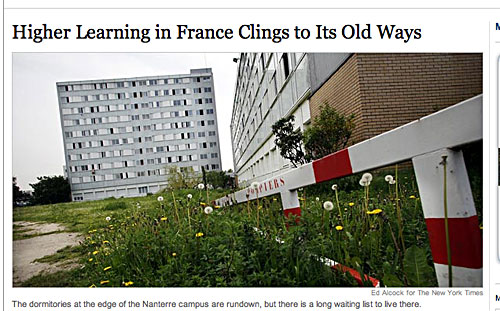There’s a very insightful column by Jonathan Freedland in the Guardian today. What’s interesting about it is that Freedland tries to stand back, to try and see what New Labour’s gathering crisis might look like from the vantage point of, say, 30 years hence. “Blairism was not merely a continuation of Thatcherism”, he writes.
In dialectical terms, it can claim to be a synthesis of the free-market revolution and the welfarism that preceded it. For while New Labour embraced the market, it insisted market forces could not be left entirely unfettered: there needed to be a minimum wage and at least some (though not all) of the labour protections enshrined in the European social chapter.
Blairism also understood that the public realm mattered, that few people wanted to live in a world of, in the late JK Galbraith’s words, private affluence and public squalor. So New Labour would happily follow Thatcherite strictures on the economy, but would no longer tolerate persistent neglect of the public sphere. They would invest billions in schools and hospitals that had been starved of cash for decades.
Now this synthesis is becoming a consensus of its own. Few expect David Cameron’s Conservatives to roll back the minimum wage or the social chapter. The Tories promise to maintain spending on education and health; they insist they want to eradicate child poverty.
Freedland suspects that we will come to see this period as the moment
when the limits of the New Labour synthesis were exposed. For at least seven years, Labour has sunk huge amounts of cash into the state. It has tried scheme after scheme to make it more efficient: setting targets, issuing directives, oiling, buffing and shining its creaky and rusted machinery. And yet it still isn’t working properly.
This isn’t because Blair & Co have been incompetent or that a different group of people would have done the job better.
It is rather a structural problem with the British state. Its machinery was designed for a 20th-century world that no longer exists. Today’s citizens are used to fast, efficient, wireless services that give them a high degree of personal choice; the lumbering bureaucracy of the state cannot catch up. Nor will aping the private sector, pretending government can be run like Domino’s Pizza or DHL, work – because health, education and public safety are not like garlic bread or packages. They are much more complex to deliver.
Now we’re getting somewhere. That’s why there’s been so much belated bleating suddenly about “systemic failure”. Freedland quotes the former Downing Street adviser Charles Leadbeater.
He said we were witnessing the failure of the “McKinsey state”, the Blair experiment in trying to run government like a big company, complete with management consultants and their expensive advice. “They wanted to make the sausage machine deliver a better product,” Leadbeater explains. “But that approach, of target-driven public-service reform, that Blair and [John] Birt bought into in a big way, is just exhausted.”
Amen to that. The £64 billion question is: does Gordon Brown understand this?


